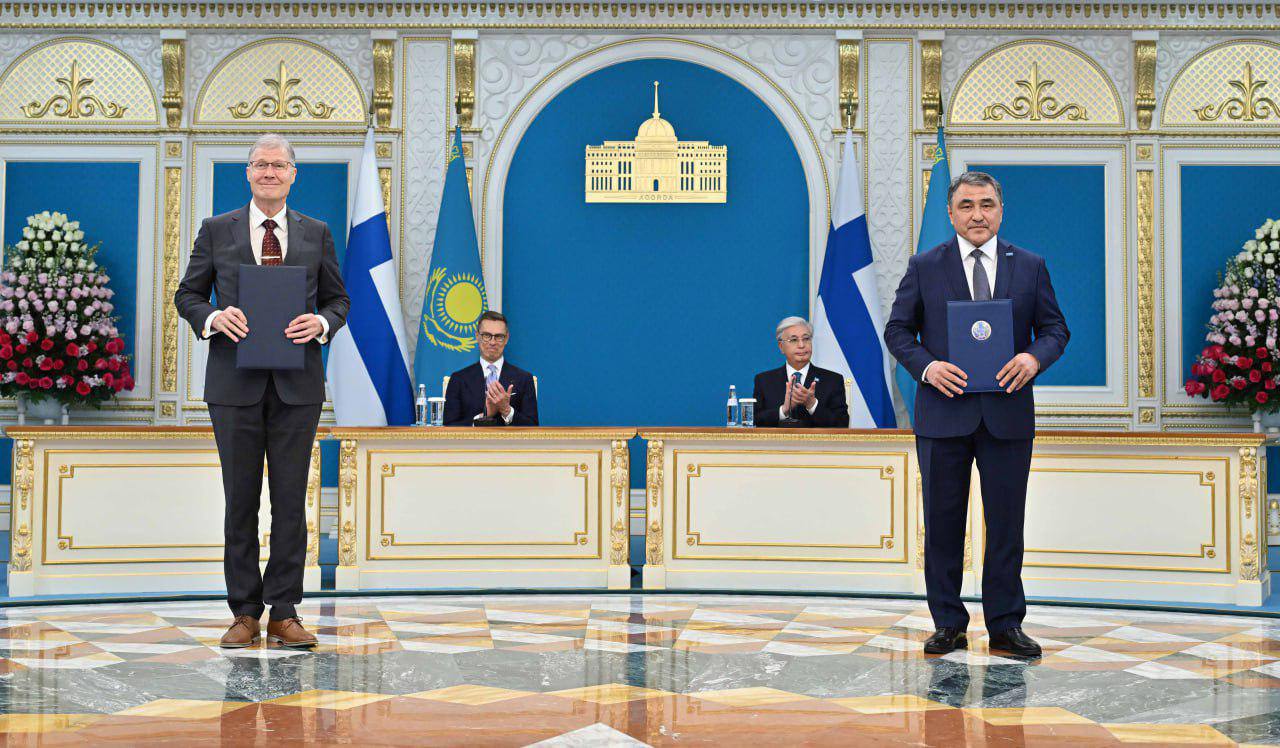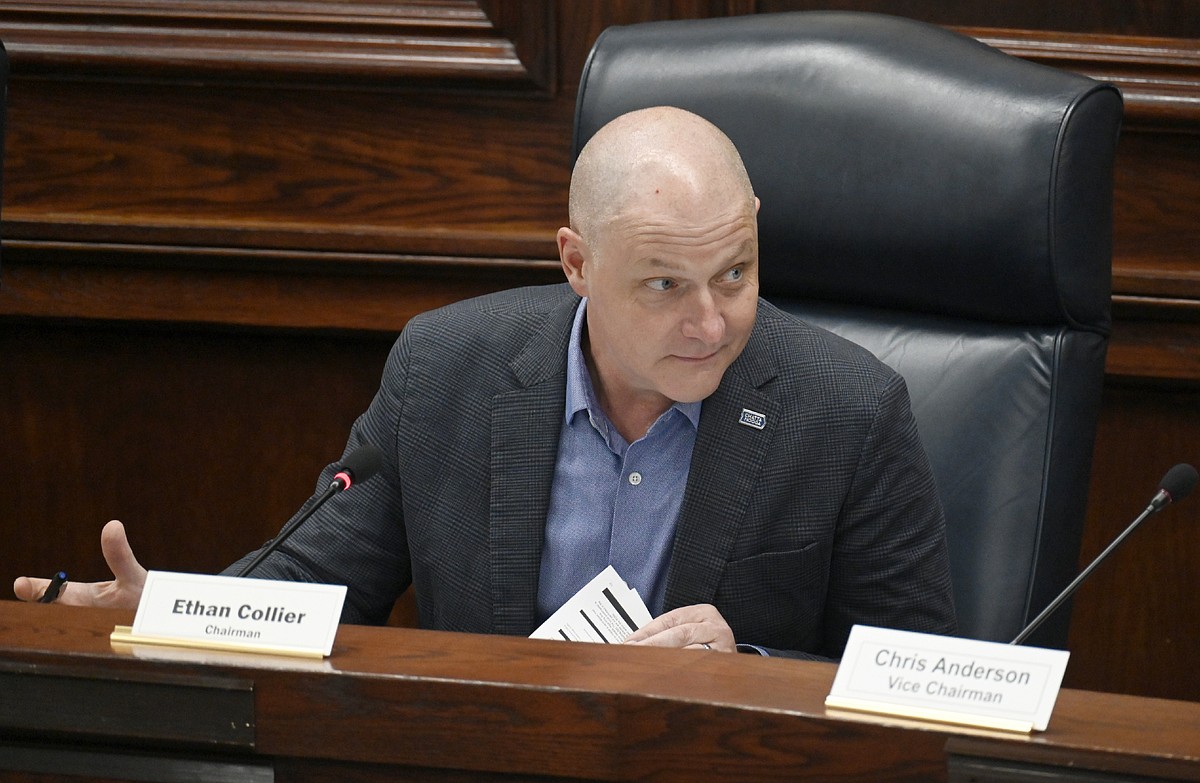Los Angeles’ Recycled Water Renaissance: A Blueprint for Urban Sustainability and Green Infrastructure Investment – AInvest

Report on Los Angeles’ Water Recycling Initiatives and Alignment with Sustainable Development Goals (SDGs)
The reopening of the Los Angeles Recycled Water Fill Station on August 1, 2025, represents a significant advancement in urban water management. This initiative, led by the Los Angeles Department of Water and Power (LADWP), is a key component of a comprehensive strategy to enhance climate resilience and resource efficiency, directly contributing to the achievement of multiple Sustainable Development Goals (SDGs).
Advancing SDG 6: Clean Water and Sanitation
Enhancing Water Security and Efficiency
Los Angeles’ efforts are central to achieving SDG 6, which aims to ensure the availability and sustainable management of water and sanitation for all. By promoting water reuse, the city directly addresses Target 6.3 (improving water quality by increasing recycling) and Target 6.4 (increasing water-use efficiency).
- Recycled Water Fill Station: Provides residents with up to 300 gallons of free recycled water per visit for landscaping, reducing demand on potable water supplies.
- Groundwater Replenishment Project: Aims to replenish local aquifers, securing long-term water availability.
- Pure Water Los Angeles Program: On track to generate 150 million gallons of purified recycled water daily by 2030, marking a substantial step towards water self-sufficiency.
Building Resilient Infrastructure for SDG 9 and SDG 11
Modernizing Urban Water Systems
The city’s infrastructure investments align with SDG 9 (Industry, Innovation, and Infrastructure) and SDG 11 (Sustainable Cities and Communities). The development of a decentralized, resource-efficient water system enhances urban resilience (Target 11.5) and promotes sustainable infrastructure (Target 9.1).
Fostering Climate Adaptation (SDG 13)
These water recycling projects are a direct climate adaptation strategy, strengthening resilience to the water stress exacerbated by climate change (Target 13.1). By reducing reliance on energy-intensive imported water and integrating solar-powered treatment systems, these initiatives also contribute to climate mitigation efforts.
Mobilizing Finance and Partnerships for SDG 17
Public Sector Investment
Achieving these ambitious goals requires significant financial commitment, underscoring the importance of SDG 17 (Partnerships for the Goals). Public funding has been instrumental in catalyzing these projects.
- Federal Funding: A $224 million WIFIA loan, $125 million in WaterSMART grants, and an $8.3 billion allocation for water infrastructure under the Bipartisan Infrastructure Law.
- State Funding: California’s $161.9 million Water Recycling Program provides crucial state-level support.
Private Sector Engagement and Public-Private Partnerships (P3s)
Public funding has created a fertile environment for private capital and effective public-private partnerships (Target 17.17). The Pure Water Southern California project, a $1.2 billion endeavor, has attracted institutional investors and green bond issuers. Corporate actions, such as Xylem’s acquisition of Evoqua Water Technologies, and P3 models like Garney Construction’s Vista Ridge project, demonstrate the private sector’s role in accelerating infrastructure development.
Investment Landscape and Economic Opportunities (SDG 8)
Key Sectors for Capital Allocation
The transition to a circular water economy presents a $300 billion market opportunity, driving economic growth and creating jobs in line with SDG 8 (Decent Work and Economic Growth). Key investment areas include:
- Water Technology (WATER) ETFs: Providing exposure to leading companies in water purification and recycling, such as Xylem and Ecolab.
- Green Bonds: Municipal bonds issued to fund specific sustainability projects like the Groundwater Replenishment System.
- Direct Potable Reuse (DPR) Startups: Innovative firms developing advanced treatment technologies.
- Carbon-Linked Water Projects: Initiatives that integrate renewable energy into water treatment, attracting ESG-focused capital.
Innovation and Responsible Production (SDG 12)
Startups are creating new value streams that align with SDG 12 (Responsible Consumption and Production). For example, Infinity Water Solutions extracts minerals from recycled water, turning a waste stream into a revenue source and promoting the efficient use of natural resources (Target 12.2).
A Replicable Model for Global Urban Sustainability
Framework for Implementation
The Los Angeles model provides a global template for other water-stressed urban areas. Its success is built on a combination of public education, clear regulatory frameworks, and investment in scalable, resilient infrastructure. This integrated approach is critical for advancing the 2030 Agenda for Sustainable Development on a global scale.
Conclusion
The initiatives at the Los Angeles-Glendale Water Reclamation Plant and beyond serve as a powerful case study in sustainable urban development. By strategically aligning water management policies with the SDGs, Los Angeles demonstrates how cities can build a resilient, secure, and sustainable future while creating significant economic opportunities.
Analysis of Sustainable Development Goals (SDGs) in the Article
1. Which SDGs are addressed or connected to the issues highlighted in the article?
- SDG 6: Clean Water and Sanitation: This is the central theme of the article. The entire text focuses on water recycling, reuse, and management strategies in Los Angeles to ensure a sustainable water supply. It discusses the Los Angeles-Glendale Water Reclamation Plant, the Pure Water Los Angeles program, and the city’s goal of 100% water reuse.
- SDG 9: Industry, Innovation, and Infrastructure: The article extensively covers the development of “sustainable and resilient infrastructure” such as water reclamation plants and replenishment systems. It highlights innovation in water technology through startups and corporate mergers (Xylem, Evoqua) and the significant financial investments ($8.3 billion federal investment, WIFIA loans) required to build and upgrade this infrastructure.
- SDG 11: Sustainable Cities and Communities: The initiatives are framed within the context of making Los Angeles, a major urban center, more sustainable and resilient. The Recycled Water Fill Station is a community-level program aimed at residents, and the article presents the city’s strategy as a “global template” for other water-stressed cities like Phoenix and Miami.
- SDG 13: Climate Action: The article directly links water scarcity and the need for recycling to “climate resilience” and adapting to an “era of climate uncertainty.” Water recycling is presented as a key strategy to strengthen the city’s adaptive capacity to climate-related hazards. The mention of “solar-powered treatment systems” also connects to climate change mitigation.
- SDG 17: Partnerships for the Goals: The article is replete with examples of partnerships. It details “public-private collaboration,” including federal grants (WaterSMART), state funding (California’s Water Recycling Program), and Public-Private Partnerships (P3s) like the Vista Ridge project. It also discusses private sector investment, mergers, and the role of institutional investors and green bonds.
2. What specific targets under those SDGs can be identified based on the article’s content?
-
Under SDG 6 (Clean Water and Sanitation):
- Target 6.3: By 2030, improve water quality by… substantially increasing recycling and safe reuse globally. The article’s core subject is Los Angeles’s effort to increase water recycling, exemplified by the Pure Water Los Angeles program and the city’s “100% water reuse goal.”
- Target 6.4: By 2030, substantially increase water-use efficiency… and ensure sustainable withdrawals and supply of freshwater to address water scarcity. The program aims to “reduce reliance on imported water” and address “immediate water conservation needs” by providing recycled water for landscaping.
- Target 6.b: Support and strengthen the participation of local communities in improving water and sanitation management. The Recycled Water Fill Station directly involves residents, requiring “LADWP bills and ID verification” to ensure the benefit reaches local community members.
-
Under SDG 9 (Industry, Innovation, and Infrastructure):
- Target 9.1: Develop quality, reliable, sustainable and resilient infrastructure… to support economic development and human well-being. The article describes the construction and funding of large-scale water infrastructure like the “Groundwater Replenishment Project” as a cornerstone of “climate resilience and economic stability.”
- Target 9.4: By 2030, upgrade infrastructure… with increased resource-use efficiency and greater adoption of clean and environmentally sound technologies. The discussion of “advanced oxidation and membrane bioreactor technologies” and “solar-powered treatment systems” directly relates to adopting advanced, sustainable technologies.
-
Under SDG 11 (Sustainable Cities and Communities):
- Target 11.5: By 2030, significantly reduce… economic losses… caused by disasters, including water-related disasters. The entire strategy is a proactive measure to build resilience against water scarcity, which is a slow-onset disaster exacerbated by climate change.
- Target 11.b: By 2030, substantially increase the number of cities… adopting and implementing integrated policies and plans towards… resilience to climate change. The article explicitly positions the Los Angeles model as a “global template” to be “replicated in cities like Phoenix, Miami, and Las Vegas.”
-
Under SDG 13 (Climate Action):
- Target 13.1: Strengthen resilience and adaptive capacity to climate-related hazards and natural disasters in all countries. The article frames the water recycling initiatives as a direct response to “climate uncertainty” and a method for building “urban water resilience.”
-
Under SDG 17 (Partnerships for the Goals):
- Target 17.17: Encourage and promote effective public, public-private and civil society partnerships. The article provides numerous examples, such as the “$224 million WIFIA loan,” federal and state grants, P3s like the “Vista Ridge project,” and private capital from “institutional investors and green bond issuers.”
3. Are there any indicators mentioned or implied in the article that can be used to measure progress towards the identified targets?
Yes, the article mentions several quantitative and qualitative indicators that can be used to measure progress:
- Volume of Recycled Water: The goal to “generate 150 million gallons of purified water daily by 2030” is a direct indicator for Target 6.3. The “300 gallons of recycled water per visit” at the fill station is an indicator of community-level water reuse (Target 6.b).
- Proportion of Water Reused: The city’s “100% water reuse goal” is a key performance indicator for measuring the overall success of its water recycling strategy (Target 6.3).
- Financial Investment Mobilized: The article provides specific figures that serve as indicators for Target 17.17, including the “$224 million WIFIA loan,” “$125 million in federal WaterSMART grants,” “$8.3 billion federal investment,” and the “$1.2 billion” cost of the Pure Water Southern California project. The overall “$300 billion market opportunity” indicates the economic scale.
- Adoption of Clean Technology: The mention of “solar-powered treatment systems” implies an indicator related to the integration of renewable energy in water management, which measures progress towards Target 9.4.
- Infrastructure Development: The completion of key projects like the “Groundwater Replenishment Project” and “Pure Water Los Angeles program” serves as a milestone indicator for progress on Target 9.1.
- Replication of the Model: The adoption of similar policies and infrastructure projects by other cities (“Phoenix, Miami, and Las Vegas”) would be a qualitative indicator of the success and influence of the Los Angeles model, relevant to Target 11.b.
4. Summary of SDGs, Targets, and Indicators
| SDGs | Targets | Indicators Identified in the Article |
|---|---|---|
| SDG 6: Clean Water and Sanitation |
|
|
| SDG 9: Industry, Innovation, and Infrastructure |
|
|
| SDG 11: Sustainable Cities and Communities |
|
|
| SDG 13: Climate Action |
|
|
| SDG 17: Partnerships for the Goals |
|
|
Source: ainvest.com

What is Your Reaction?
 Like
0
Like
0
 Dislike
0
Dislike
0
 Love
0
Love
0
 Funny
0
Funny
0
 Angry
0
Angry
0
 Sad
0
Sad
0
 Wow
0
Wow
0



























;Resize=805#)



















































